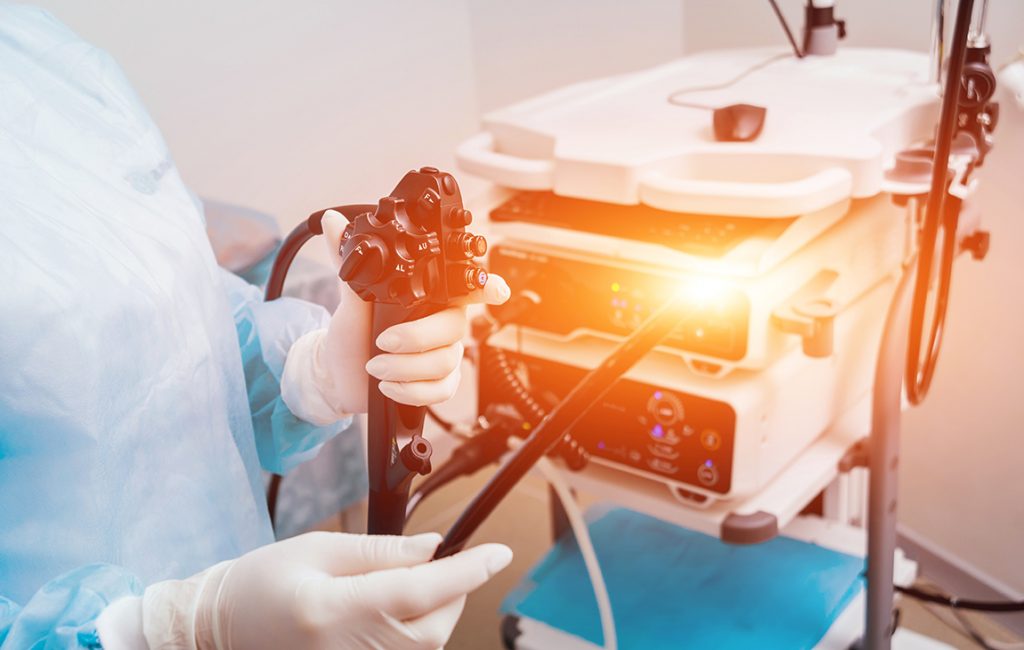
5 Common Issues Faced by Your Flexible Endoscope
Endoscopy is an invasive diagnostic medical imaging process. Unlike other non-invasive medical imaging techniques, endoscopes are directly inserted into the body for detailed examination of tissues, surfaces, or the interior of organs through the mouth or anus or via small incisions in the body.
Endoscopes are expensive and rather fragile. The life of an endoscopic device is variable and highly dependent on its handling and care. The cost of an endoscope is $20,000+ while serious repairs can cost on average.
To avoid turnover, the staff must be well trained and should know common issues occurring in endoscopes. The distal tip is an essential part of the endoscope as it contains light lenses, a camera, a charge-coupled device, and nozzles for air and water. If the tip is cracked or harmed, consider 45% of the device damaged. The tip can be damaged by rough handling and storage, abrasive cleaning, or scrapping of the tip on the floor.
Common Issues Faced in Endoscopes
Endoscopes face the following general issues if not handled correctly:
- Damaged Water-Resistance Cap
- Light Lens Cracking/Chipping
- Clogged Air/Water Nozzle
- Abnormal Angulation
- Dents and Kinks
1. Damaged Water-Resistance Cap
Nearly 25% of the endoscope is damaged if the water-resistance cap gets rusted or chipped as it plays a vital role in protecting against fluid invasion.
Rusting inside the cap, around the leak test connection nut, is an indication of damage. The cap prevents fluid leakage; therefore, scope manufacturers highly recommend that the water-resistant cap be replaced every 18 months.
2. Light Lens Cracking
You should be careful when plugging the light post into the processor so that it doesn’t bend. Any crack in the lens that is caused due to undue force can end up hindering the amount of light shone by the scope.
Sometimes the light fibers also break. Proper inspection of the light post is essential to check if the light is shining through the lens. The cracked lens may cause fluid invasion, which can interfere with endoscope functions. It can also cause staining and brittleness in fiber bundles.
3. Clogged Air/Water Nozzle
The nozzle has a small opening that uses water and air to clean objects during the procedure. When the filter on the nozzle is misplaced or damaged, debris can enter the channel.
Another major cause behind the malfunction of this nozzle is due to Glutaraldehyde formation, as chemical disinfectants can result in breakage of the track.
4. Abnormal Angulation
A series of control cables and metal wires are connected to a pulley system to form the angulation system in the endoscope. Irregular bending can occur when the metal wiring does not move or isn’t stored properly, which results in overstretched bending rubber in the wires. This, in turn, results in physical damage in the form of pinholes, cuts, fluid invasion, and wearing of the internal mesh.
Usually, bite blocks, extended coiling or straight hangings are used to avoid extreme wire twisting. Sharp bending in the insertion tube increases the friction on the cables and stress on the solder joints. Routine replacement of the bending rubber is the best way to avoid leakage.
5. Dents & Kinks
The hollow insertion tube is susceptible to damage, which usually occurs due to improper handling and the absence of bite blocks. These buckled channels eventually spring a leak that results in major fluid contamination.
To minimize the high repair costs for endoscopes, it is recommended to ensure proper use of bite blocks and carefully clean, transport, and store them. Make sure you take care of the insertion tube and universal cord, as well as the internal components of the endoscope.
Minimizing Damage Rates & Repair Costs
Scope downtime is not only expensive but also reduces the efficiency of diagnostics. It causes delays in schedules and requires overtime from the staff for reprocessing these scopes.
About 85% of damage is avoidable if certain practices are enforced. To avoid unnecessary suspension of procedures, repair expenditures, and infection manifestation, invest in preventive inspection, testing, proper handling, transport, and storage as per the protocol. Since internal damage can not be detected easily, routine visual examinations must be done diligently.
